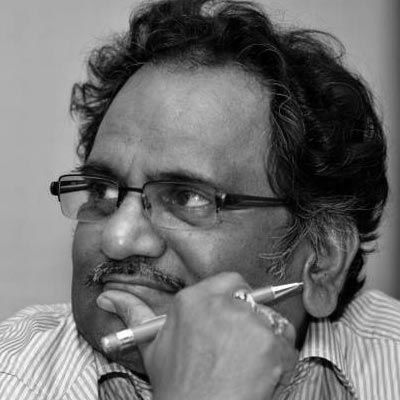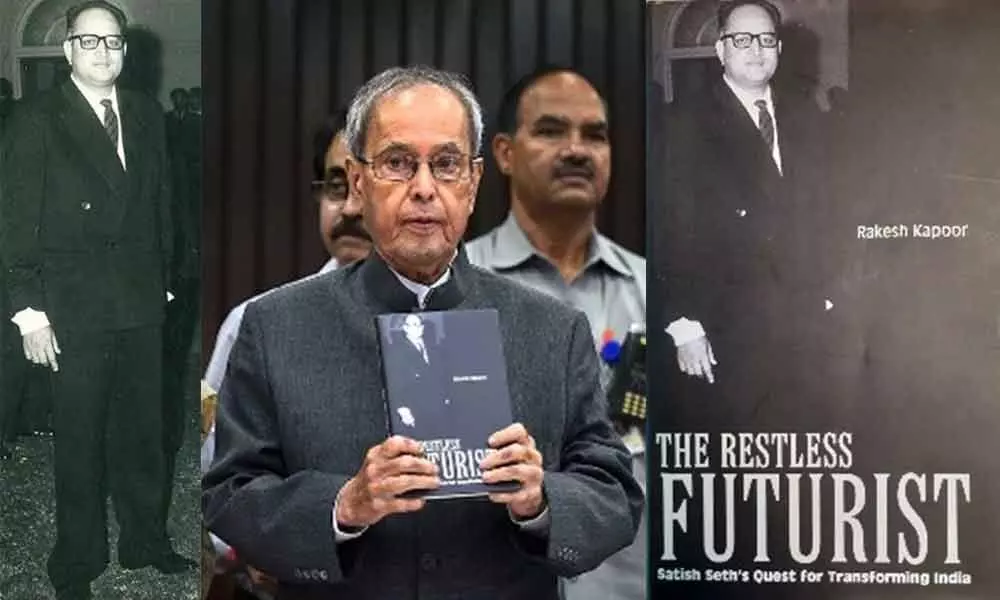Live
- Employability skills programme concludes
- Govt plans to establish offshore Johns Hopkins University Campus in India
- Goa Aces clinch Indian Racing League title
- Study finds how hormone therapy can reshape the skeleton
- High-street fashion players looking at India for manufacturing: Report
- Shreyas Iyer to lead Mumbai as Prithvi Shaw returns for Syed Mushtaq Ali Trophy
- 'Failed to resolve crisis': NPP withdraws support from BJP govt in Manipur
- Chennai: Actress Kasturi Remanded in Custody Until 29th of This Month
- Aaqib Javed likely to become Pakistan's new white-ball head coach
- BJP panel to draft poll charge sheet against AAP govt in Delhi
Just In
21st century belongs to people of vision


‘No matter what views one may hold, the 21st century shall belong only to a people of ‘vision’ and those who care for future,’ wrote Satish Chandra Seth, (1932-2009) the futurist and former civil servant.
'No matter what views one may hold, the 21st century shall belong only to a people of 'vision' and those who care for future,' wrote Satish Chandra Seth, (1932-2009) the futurist and former civil servant.
A science education administrator, Satish is internationally known for inventing a method of assessing the futurist thinking, called Satish-Harva method of scenario building. He was internationally recognised scholar in the field of future studies.
Satish is rightly called 'Restless Futurist', for his vision and action. He visualised the future like nobody else. His thinking went beyond the Civil Service and served the nation to get ready for the 21st century or for further times of the future.
He envisioned the collection of big data and processing of the information, which is a reality today. He thought of 'anticipatory management', which appears to be a rudimentary part of the 'artificial intelligence'.
Rakesh Kapoor, writer and editor, working on interface of science, technology, society and the future has studied the literature generated by Satish to write a book "the Restless Futurist, Satish Seth's Quest for Transforming India", which released on September 14 by former President Pranab Mukherjee in Delhi who also gave his memorial lecture.
This book explains how Satish was striving for promoting future's literacy and the culture of anticipatory management spanned in every aspect of public life in India, governance, policy making, the economy and educational institutions.
Renowned scientist R A Mashelkar, in foreword, said Satish was not just an individual but an inspiring institution, with endowment of unusual intelligence, deep insights and great global outlook… both of the Satish's predictions came true – first is the non-oil-based energy, we all know that today renewable energy is the only energy for the future, second is: his prediction of the information era. Satish advocated for heavy investments on data collection, information retrieval and information processing.
RTI and IT
ICT applications in modernising and linking every field have grown beyond imagination. Information superhighway is linking the whole world. We are talking about digital economy, digital democracy and digital dialogue between the State and the people.
In Rajasthan, where the movement for RTI began and Indian people achieved the RTI ultimately in 2005, a new step was taken forward i.e., a new jansoochna.rajasthan.gov.in has been launched with mega data about 20 services offered by 13 departments in pursuance of implementation of Section 4(1)(b) of RTI Act, which calls for voluntary disclosure for public service information by the State authorities.
While the statute guaranteed the information, technology enabled it to happen. But the political will of the government and constant endeavours of civil society organisations made it possible.
Today anybody can click to know latest information about PDS – whether a ration card holder is getting his ration from the dealer, what are the stocks available and not available, when he can get so and so ration etc.
Not only updates about his ration, one can also know about all others including their ration card number, address, dealer number, name and other details.
Similarly, about pension, scholarship, housing schemes etc, anybody can know from any corner of the country through RTI. This RTI and IT combination is going to change the systems of governance and shape the democracy in a positively progressive manner.
But values, more than the volume of information, are important. Satish said, "The real problems of change and future do not lie with 'technology', but with the 'value' systems". I think it is impossible to disagree with him especially on this point.
Grip of past
The point emphasised in his book was that Satish was worried that many of us are converting today's and tomorrows into yesterdays. He says that most of us are living in the 'grip of past'.
We block our thinking with karma theory, believing that our status of present existence is because of past deeds, and we need not do anything to correct it as it is predestined.
In the process, we do not think about future and hence never plan for tomorrow. For us, tomorrow is another day that is ready to become a useless yesterday, every time.
He made a very effective statement on past versus future orientation. "Even though tomorrows do not repeat yesterdays, most people and most societies try not only to perpetuate yesterdays, but unconsciously, even carry them forward into tomorrows.
All thinking men and women should instead be asked if they are turning their tomorrows into yesterdays? If so, why?"
One interesting statistic he refers to in his writings is that ninety nine percent content of our textbooks is filled with past and not a single idea about future is incorporated in any of the subjects. Future should be taught as if 'future is today'.
He wanted futuristic thinking to pay attention to four major systems:
• Socio-cultural system
• Educational system
• Management-technological system; and
• The policy and political system
Five significant factors that define futuristic India, according to Satish, are:
1. India's large human system
2. India's abject and unending poverty
3. India's development in its internal geographical context is inhomogeneous,
4. India lives at the same time in several centuries and thus displays a unique cultural plurality and finally
5. India always displays a technological plurality- bullock carts and satellite technology coexist here.
Rebuilding bureaucracy
Satish futuristic thought emphasised the need of rebuilding bureaucracy working at different levels. He rightly said, "We need a band of people who can work for and towards the 21st century and those who do not believe only in conformity but also can pay attention to creative non-conformity, which in fact, is now widely recognised as the essence of the new management in government".
But the nation as such does not even think about rebuilding the bureaucracy. There are neither plans nor proposals. Coaching centres coach the candidates to learn by-heart the dead numbers and letters of the articles of Constitution, without teaching them the principles behind provisions and their application in administration.
Sadly, one can find neither values nor the commitment to provide good governance. Choosing Civil Services as a career is just to have a better employment, and they do not even recognise the need for vision.
In the result, some sacrifice their lives while other officers end up playing power politics, pampering those in office and prepare for rich and comfortable life after retirement.
Whose is 21st century?
As he rightly pointed out, the 21st century shall belong only to a people of vision. It belongs to Satish Seth and visionaries like him.
Though he is no more, and lived in yesteryears, Satish C Seth is not 'yesterday'. He has not passed away. He is here as present, as representative of future.
He is now in todays' world as his thoughts are as fresh as the context and latest. He is also the tomorrow as the vision he envisioned will be coming to reality.
In Public Administration, his scholarly reputation is linked to his amendment to Parkinson's Law, "Law of Hierarchical Parallels" and 'The Law of Civilian Mercenaries".
His important books are "Future Scan and Anticipatory Management (UNESCO enlisted), "India: The Next 7,000 days", "The Pak File" and "Communalism".
Satish's wife Padma Seth, daughter of Madabhushi Anantasayanam Iyengar, felicitated the former President, while son Aditya organised panel discussion on "the Restless Futurist" wherein Dr N Bhaskar Rao, Prof Veena Ramachandran, writer of the book Rakesh Kapoor and author of this article spoke.
Satish is founder of Indian Society of Training and Development (ISTD), the Indian Council of Management and Future (ICMF), and the Centre for Anticipatory Management (CAM).
(The writer is former Central Information Commissioner and Professor of Law, at Bennett University, Greater Noida)

© 2024 Hyderabad Media House Limited/The Hans India. All rights reserved. Powered by hocalwire.com






